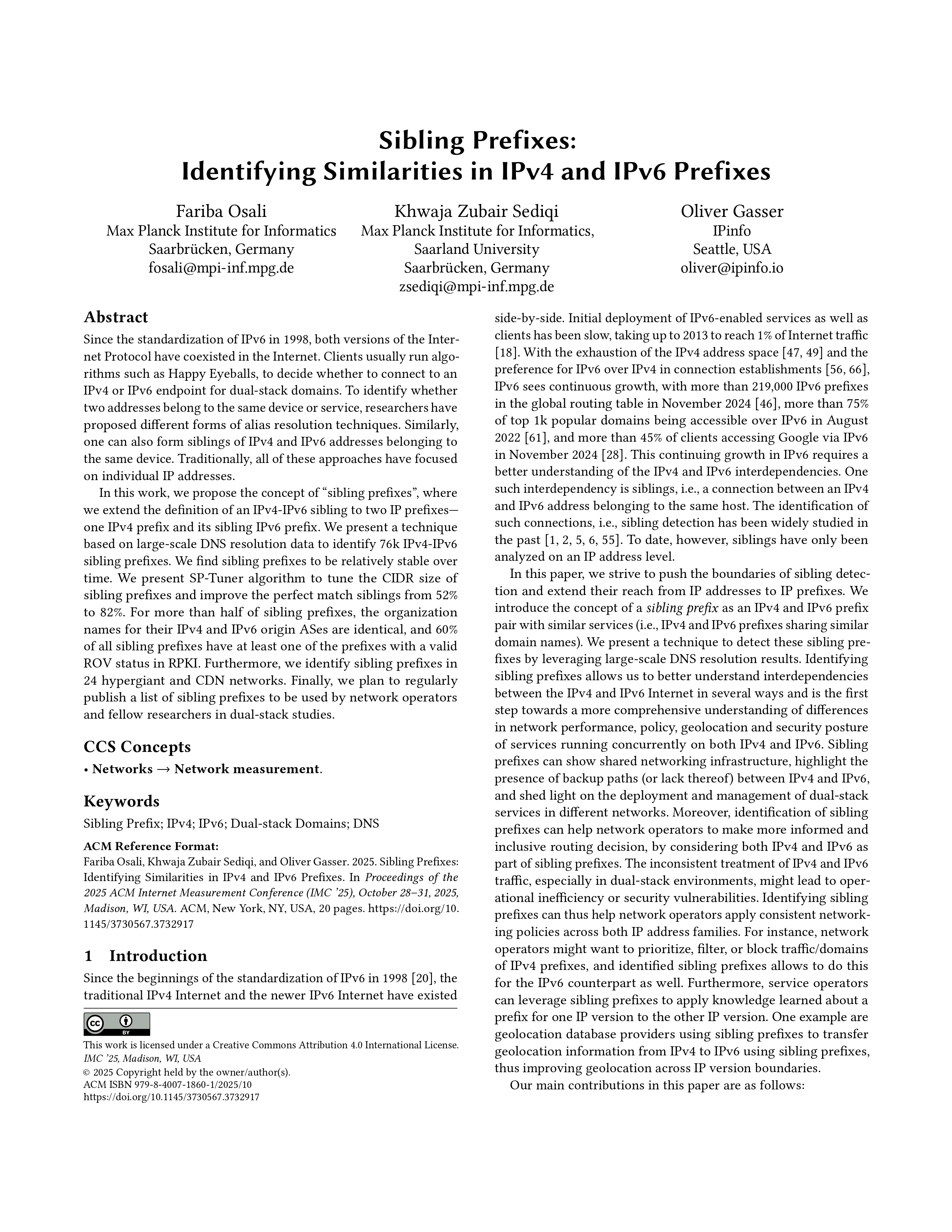We introduce the concept of a sibling prefix as an IPv4 and IPv6 prefix pair with similar services (i.e., IPv4 and IPv6 prefixes sharing similar domain names). On this website, we present results from our ongoing Sibling Prefixes measurements and provide fellow researchers with access to the measurement dataset. For methodology and details, see Sibling Prefixes: Identifying Similarities in IPv4 and IPv6 Prefixes.
Get the data
We make the processed sibling prefixes available to fellow researchers here. Due to the sensitive nature of the data, please send a quick registration email to get free access. We use the registration data for statistical purposes and might very occasionally send a survey or other requests for feedback. Alternatively, you can also click here to download the latest processed data.
Referencing the Sibling Prefixes: Identifying Similarities in IPv4 and IPv6 Prefixes
If you are using data from the Sibling Prefixes: Identifying Similarities in IPv4 and IPv6 Prefixes in your publication, please cite it with the following reference:
@inproceedings{osali2025sibling,
title = {Sibling Prefixes: Identifying Similarities in IPv4 and IPv6 Prefixes},
author = {Osali, Fariba and Sediqi, Khwaja Zubair and Gasser, Oliver},
booktitle = {ACM Internet Measurement Conference 2025},
year = {2025},
month = oct,
doi = {10.1145/3730567.3732917}
}
